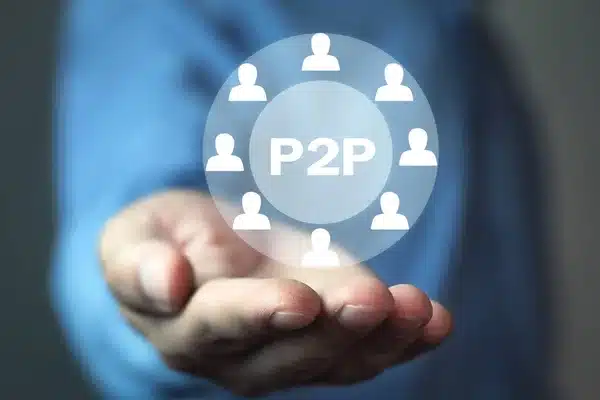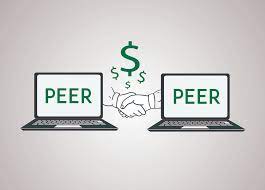What Is Peer-to-Peer (P2P) Lending?
Peer-to-peer lending involves issuing loans to people without an intermediary being involved. The users can ask for funds by creating loan listings on a P2P platform. These platforms process the applications and carry out credit evaluation. The loans issued can be used for a variety of uses such as personal uses and institutional development as well. These platforms work within their areas of jurisdiction and according to the laws set by the country they are living in.
Examples Of P2P Lending Platforms
- Lending Club: It is found in the United States and issues business loans and personal loans.
- Zopa: Found in the United Kingdom(U.K). It issues personal loans and investment loans.
- Aave: It is based on the Ethereum blockchain and it allows users to loan out and borrow cryptocurrencies at rates depending on the demand and supply rate.
Finding Out How P2P Lending Works
Here are the steps that are involved when an investor applies for a loan on a P2P lending platform.
- The investor submits an application that involves the amount and the reason on a P2P lending platform
- The platform evaluates the investor’s creditworthiness.
- The loan request containing the reason, the amount as well and the annual percentage interest rate are listed.
- A lender reviews the application and decides to contribute a certain amount of the loan requested.
- Several lenders do the same thing until the loan requester’s amount has been reached.
- The loan requester receives the full amount.
- He or she starts paying monthly instalments.
- The platform shares the money paid to the lenders.
Since the payment includes interest, the lenders gain an income from the amount they pay.

The Difference Between Secured And Unsecured P2P Lending
In secured P2P lending, the loan applicant provides collateral. In case he or she is unable to fully pay the loan, the lender takes possession of the collateral and is free to sell it to make the money back.
In unsecured P2P lending, there is no collateral offered. The creditworthiness of the loan applicant is checked and is the main factor that determines the loan approval.
In case the applicant defaults, the lender turns to the authorities for legal action to take place.
Also Read: Belarus sets A Ban on Peer-to-Peer (P2P) Crypto Transactions
How Can One Become A P2P Lender?
It is important to check out the platform that provides suitable conditions for you to thrive as a P2P lender. Some of these conditions include well-defined charges and a good history of effective transactions. Make sure you follow up on any legal concerns in your country such as the need for licensing to become a lender.
Once you’ve done this, sign up with your identity information and bank data as well. Deposit a certain amount of money which investors may desire to use for investment purposes.
As a P2P lender, you will have access to loan listings which contain the borrower’s data such as the reason for applying for the loan, and the interest rates that are likely to be used.
Once you have decided on the loans that you’re willing to fund, you should keep tabs on the dates they are supposed to be repaid as well as the amount. Check on the ones defaulting on the loans and start coming up with strategies on how you’re going to recover your money.

Making Passive Income Through P2P Lending
P2P lenders earn interest on their loans
During the loan repayment period, the borrower usually pays interest on top of the principal. This money is shared amongst the lenders and they make an income or profits through the interest.
It is worth noting, however, that this depends on the borrower’s repayment behaviour.
Passive portfolio management
The P2P lending systems control the collection of payments and loan services. The loan platforms enable the lenders to receive interest payments fairly. They also ensure that the loan applicants finish paying the loan.
Reinvesting repayments
The lenders can grow their loan portfolios and earn more money through interest if they issue more and more loans. The passive income increases as this is done.
The Advantages Of P2P Lending
- It lets the investors diversify their portfolios by issuing different loan applicants with loans.
- It is a source of passive income through interest paid on the principal issued.
- P2P gives traders a chance to access credit services if they don’t get access to bank loans and other financial institution loans.
- The lenders can run a background check on the profiles of the loan applicants before they issue them with loans.
- Lenders make more gains compared to if they had kept their money in a savings account.
Before trying out P2P lending, all the parties should be aware of the terms and conditions, as well as how these loans work to avoid inconveniencing one another.
The Challenges Associated With P2P Lending
- The loan applicant may default on the loan.
- There are a variety of loan applicants with different values of creditworthiness and the ones exposed to high risk may default on the loans.
- Absence of collateral: Some loan applicants may not have the collateral that is needed to secure the loan hence preventing them from applying for one.
- If a platform experiences operational challenges, it could pose a huge risk to the lenders and they may fail to get their money back.
Before taking part in P2P trading, all the parties should be aware of the benefits and the risks associated with it. This will make it easier and simpler to follow the terms and conditions that apply to the loan repayment.













Discussion about this post